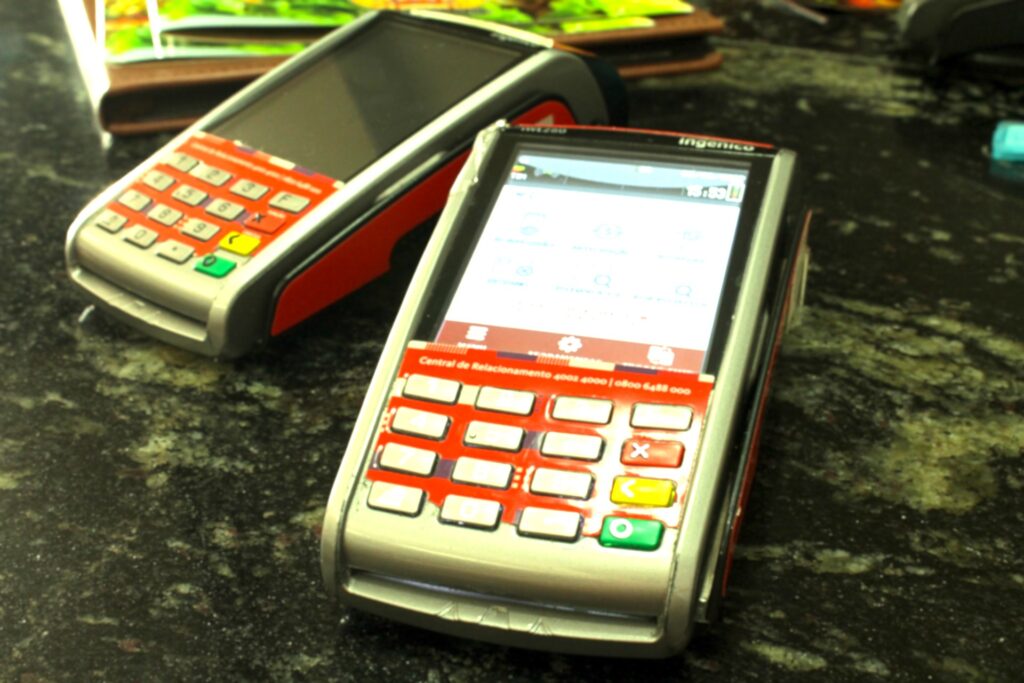The FinTech revolution has changed the face of Finance and with it has brought several buzzwords. In the first part of our series that looks into the different FinTech trends and how they have changed the various areas of financial services FinTech we looked at #WealthTech. In the second part, we will now take a closer look at what aims at nothing less than eliminating the good old coins and bills: #PayTech
Payments is the area of finance that has possibly seen the biggest transformation. While credit cards have been around for some time, cash was still predominantly the form of payment – until the rise of online shopping and smart phones. PayTech, the FinTech branch of all things related to payment technology, doesn’t stop there. To understand the full scale of the PayTech disruption, we need to consider the entire process of how payments are executed. While it’s simple in an all-cash transaction, already paying with your credit or debit card means that you involve not only the merchant you pay for the goods but also at least the merchant’s bank, your own and potentially another third-party service that processes, verifies, and accepts or declines credit card transactions on behalf of the merchant through secure Internet connections. Or take the international payment settlement systems that sort out cross-border, foreign exchange payments. While standards have developed over the years, many are still country- and product-specific systems, e.g. for cash machines and credit card payments. And then there is the regulatory angle with different jurisdictions and different national and international laws and regulations.
All this has been turned upside down. The digital disruption and innovative technologies have introduced new forms of payments and related services. Cloud computing is flexible and cost-effective. It can be scaled up to accommodate growing demands, enabling businesses to build and adapt their operations more effectively and efficiently, which is particularly beneficial for FinTech startups. Thanks to APIs (application programming interfaces) two or more connected services can interact online and are the basis for solutions that integrate and combine different services and data sources. But regulation also plays a major role in this transformation as new rules foster the development of open and collaborative payment systems. Let’s look into these points in a little more detail.
E-Commerce Payments/Online Payments
If you bought stuff in the early days of Ebay, it was all PayPal and to an extent it still is the payment method endorsed by the company that formerly owned the payments provider. Paypal was a pioneer that has recently become rather crowded and new firms look to provide better solutions or ones that fill a specific void. Stripe, for instance, claims to be the best software platform for running an internet business. The company, which was founded six years ago, integrates payment processing into websites without having to register and maintain a merchant account. It claims to handle billions of dollars every year in the 25 countries it already covers. Klarna, the Swedish company that – among other services- provides online financial services such as payment solutions for online storefronts to 70,000 stores all around the world with 60 million customers. The idea is to make the payments process more secure and less expensive making the whole operations more frictionless.
Point of Sales
The point of sales is the time and place where a retail transaction is completed, either by a human cashier or a machine. Whether human or not a number of actions need to happen at that point: calculation of money owed, indication and processing of payment – either cash or electronic – and the issuance of some form of receipt. The system behind this process can and often does handle other aspects as well: it manages the inventory by booking the sold products out, handle financials, or process customer data. Paytech can focus on the actual point of sales, for instance by providing different kinds of payment terminals that accept anything from contactless to ApplePay to Samsung Pay and so on. Poynt is a company that focuses on giving merchants access to innovative technology without compromising on security or user experience through an open and developer friendly platform. Clover uses tablet-based systems that accepts NFC-based payments from mobile wallets plus card slots for chip and PIN credit cards.
Others focus on the personalisation as a strong selling argument to their service like OpenTable. What startet as a handy way of reserving a table in a restaurant, it also lets you automatically pay for your meal without actually paying at the end of the evening. Instead, customer add a credit card to their accounts and with the reservation all purchases get linked to it, add a tip through the mobile app and leave without waiting for a bill in the knowledge that the card gets charged with the final amount. The German Quandoo works with a similar model and adds special deals to its offering for 17,000 restaurants in 12 countries around the world.
And then there is Square. The company co-founded by Twitter’s Jack Dorsey started with the Square Reader that is used to accept credit card payments by connecting to a mobile device’s audio jack. Square has since added a number of other products and services to its range, including a point of sale software, which combines payment processing with aspects like itemization and inventory management as well as the integration with third-party platforms. Traded on NYSE since 2015, the company now has a market cap of more than $22billion.
Money Transfers
If you live in the US or in the Eurozone and don’t have much to do money wise with other countries, you might not be aware of the problem, but if you’ve ever tried to transfer money from one currency to another, you will know that it traditionally was expensive and not fast. Digital disruptors like Transferwise let you send money abroad at a friction of the cost banks or other providers charge. The idea behind the company’s peer-to-peer service is simple: instead of making one international transfer, two local transfers are made as the company sits in the middle of the transaction between you and Transferwise in the currency of origin and the other transaction in currency you like to convert. The value is calculated based on the exchange rate plus smaller than usual fees. At the time, Transferwise does the same with another customer that wants to send similar amounts the other way to match the amounts without actually converting anything. Remitly targets the large market of remittance payments the US, the UK, or Canada to the home country of an individual. Remitly’s global transfer network is based on its mobile app and 40,000 bank and cash payout partners. The company transfers over $4 billion in annualized volume from its customers to currently 10 countries worldwide.
These models, however, are already under threat from another form of financial innovation, virtual currencies. One of the driving forces of Bitcoin and other virtual currencies is their use for money transfer purposes, especially in countries like Venezuela were the local currencies are under immense pressure. The real potential might lie in the settlement mechanisms and exchange of value for wholesale payments as the various projects by FinTechs and traditional financial institutions show. At a friction of the cost and time at an increased level of security and transparency, virtual currencies could be the key. Startups like Bitpay, Bitwala or Coinify use virtual currencies to disrupt traditional processes: Bitpay offers retail, ecommerce, billing, and donation tools to accept payments from customers anywhere on earth and lets clients receive settlement for Bitcoin payments directly to their bank account in their own currency. Coinify similarly allows customers to use virtual currencies as payment methods, but also lets them trade Bitcoin and other coins as well as integrate them into existing services. And Bitwala aims at nothing less than create a Blockchain bank that allows its clients to buy and sell bitcoin, make and receive payments and manage their clients’ finances all in one place.
This is only a screenshot of the current situation as the transformation is far from over and trends become evident about how the sector is going to develop further. In the second part of our analysis of PayTech we will look at these developments and how they will shape the industry.

